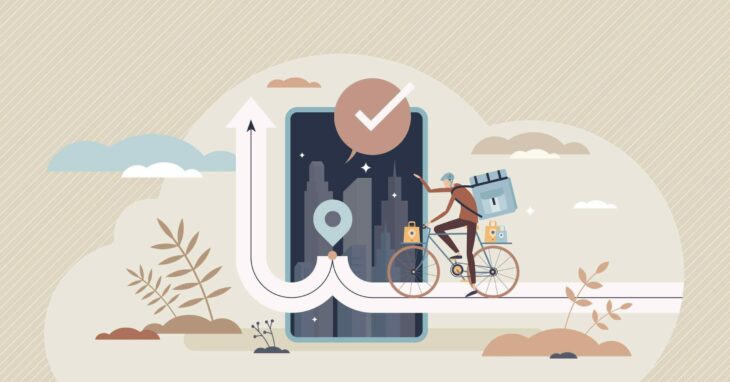The 7 Stages of the Employee Life Cycle and Why They Matter

The Employee Life Cycle have more focus than ever. Customer-first, customer-first, customer-first – is a mantra that still is strong in many organizations. But the war on talent has made many smart organisations change their communication hierarchy.
From: 1: Potential customers 2: potential employees, 3 current customers, 4 current employees.
To 1: Current employees, 2 Current customers, 3 potential employees, 4 potential winners
Try Questback 14 days for free.

Discover what truly motivates your employees so you can skyrocket your productivity and profitability.
Learn moreThe Customer Journey Applies to the Employee Life cycle
The Harvard Business Review, McKinsey, Deloitte and others herald the importance of the employee experience. The Deloitte Global Human Capital Trends states, “A strong employee experience also drives a strong customer experience.” Given the importance of your employees, the same concept applies to their journey: the employee life cycle. Mapping the employee journey and focusing on the employee life cycle provides you with the chance to not only attract the talent you need to compete in today’s markets but also deliver a more sustainable customer experience.
The journey covers seven main stages, with each one providing different opportunities for business-critical feedback:
Stage One: Attraction
Competition for talent is fierce. And employees are increasingly demanding about where they choose to work. At the very start of the employee life cycle, attracting the right talent is critical. You need to develop a strong employer brand that reinforces your vision, mission, and values. Attract with visuals, like to logo design and the content. Ensure you are viewed as a great place to work. Listening and acting on feedback is a cornerstone to this. Manage your online reputation actively and consistently, through social media and sites like Glassdoor.
Stage Two: Application
You wouldn’t force your customers through a complicated, time-consuming process when they are buying from you; the same thing applies to the employee life cycle. Start with the application process. Make it simple and straightforward, always treating people with respect. This includes responding to all candidates, even those that don’t make it to the interview stage. Unsuccessful candidates may well re-apply later to roles they are better suited to or even become customers down the line. Managing their experience is just as essential as those that you hire. Keep people informed, listen to their feedback and use it to improve this stage of the employee life cycle.
Stage Three: Onboarding
Successfully onboarding new employees is critical. How do you know your processes are right for the new employee journey? Ask for, and listen to, their feedback from the moment they join. Essentially, when hired, employees open the feedback loop; ensure you are listening. Utilize technology that makes it simple to collect their views across the employee life cycle. For example, employee training and onboarding surveys can be implemented to collect and act on their feedback. Use this employee insight to improve the employee journey. New employees also provide a fresh perspective on how your company operates. Listening to employees at this stage of the employee life cycle will also allow you to solve minor issues before they develop into bigger problems down the line. Ensuring a smooth transition is not only important for immediate productivity, but also for the long-term sustainability of the relationship. Too many companies wait until it is too late, the exit interview, to collect feedback.
Stage Four: Retain
About half a million U.S. workers left their jobs in the last quarter of 2016, an increase from 365,000 in the same period two years earlier. If you want to win the war for talent, you need to request feedback from them regularly and throughout the employee life cycle, following best practices to keep them engaged. The old-dated annual employee survey is no longer enough – you need to open an ongoing dialogue and get insight regularly through pulse surveys and always-on feedback to meet today’s employee life cycle challenges.
Stage Five: Develop
Once they are established in the business and have found their feet, employees need new challenges to continue their learning and development. This motivates them, boosting both engagement and productivity – a win-win for employees and the company. A lack of progression often causes employees to look elsewhere, hitting your bottom line and causing disruption when they depart. Like the annual employee survey, many companies are moving away from the annual performance review as it is simply not frequent or personalized enough to their needs and generate genuine insight. Gather feedback more frequently in addition to specific events, (e.g. promotions or after training courses), showing that you are acting on this employee insight to help develop your staff.
Stage Six: Exit
Many businesses fail to listen to employees when they leave. Yet, this is a vital part of the employee life cycle and provides an opportunity to gather honest feedback from employee exit interviews. Make sure you manage exit interviews properly and professionally, analyzing the insight provided by departing employees. This insight could help you make improvements to increase your employee retention and improve your employer brand. Showing that you are still listening at this stage of departure in the employee life cycle proves that you are committed to employee engagement across the whole journey.
Stage Seven: Alumni
Exit may close the loop on an employee’s experiences, but other opportunities for feedback remain. The business world is fluid and interconnected; an employee leaving doesn’t mean the end of engagement. In the future, past employees may rejoin your business, work for a customer or be asked for their opinion on your company by potential applicants. Make sure you don’t forget this part of the employee life cycle and use tools, such as social media and online communities, to connect with alumni and continue to listen to their feedback.
Businesses need to ensure they are focusing on the employee life cycle, mapping and understanding the employee journey. Employees provide different types of feedback depending on their stage in the employee life cycle, so be ready to listen to them. Create an employee life cycle roadmap, ask for their feedback and use these insights to improve how you operate. Invest in employee life cycle management technology to help you collect and act on feedback. You’ll be able to better engage with your people and retain them for the long term.
Good luck with your employee life cycle!
Want to learn how you can gain the benefits of Employee Experience? Find out more at our Employee Experience page.
If you’d like to sign up for a free trial with our market research tool or know more about how to create effective surveys click here. We’d love to hear from you!









